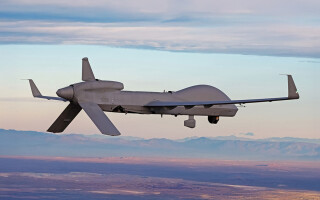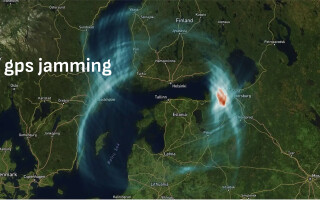Viasat adds to MOJO product family with solutions for on-the-move comms, situational awareness
NewsMay 05, 2025

SOF WEEK 2025 -- Tampa, Fla. Viasat Government -- the Carlsbad, California-based supplier of communications, networking, and satellite solutions -- will unveil its Move Out/Jump Off (MOJO) Mini Next today at SOF Week 2025, currently being held in Tampa. The capability was designed to deliver a compact and ruggedized Link 16 Tactical Data Link situational awareness capability for at-the-pause or on-the-move applications.
Part of the MOJO product family, the size, weight, and power (SWaP)-optimized solution was engineered to integrate into customers’ existing system architectures and provide a more cost-effective alternative to larger, infrastructure-heavy gateway solutions used to support expeditionary communications.
David Schmolke, the company’s Vice President of Mission Connections and Cybersecurity, explains that it is a “highly interoperable” two-channel radio, with one channel dedicated to the Link 16 waveform and the other operating “over a number of different waveforms.”
“We have taken this radio and integrated it into a small-form-factor box with integrated power management in there and M-code GPS [a military-grade, encrypted GPS signal], which is resistant to jamming,” Schmolke notes.
Developed based on user feedback, the MOJO Mini Next can also work with the KOR-24A Small Tactical Terminal while enabling network convergence across Tactical Digital Information Link J (TADIL-J), and Very High Frequency/Ultra High Frequency (VHF/UHF).
According to the manufacturer, as a line-of-sight (LOS) and beyond line-of-sight (BLOS) system, it offers increased mobile and tactical capabilities to centralize communications of expeditionary data and intelligence into a common operating picture. Moreover, it has been built to provide situational awareness for C2, targeting, and real-time decisions while reducing the risk of accidental friendly fire.
“When you are operating in the middle of nowhere, in the jungle, in a maritime environment, in the middle of the ocean, in the desert somewhere, you don't have cell towers, you don't have coverage,” Schmolke says. “With our radio and that common operational picture application running on a computer, you can see where everybody is and you can talk to them.”
For that matter, the system was built to endure extreme conditions in a ruggedized 15.6 W x 10.1 H x 25.0 L in a carbon-fiber rackmount transit case for harsh environments and mobile applications. Another feature is the panel of easy-to-access connectors to facilitate the operation requiring a sole person to set up and operate the system.
“We don't want the typical soldier, the typical user of these types of radio, to be heavily trained on communications. We want them to be focused on the purpose of the radios for them to be connected,” Schmolke remarks.
In terms of platforms, the system was designed for SWaP-constrained applications and can be deployed in diverse types of land, maritime, and air assets. It is suitable for small tactical vessels and lighter ground vehicles, such as High Mobility Multipurpose Wheeled Vehicles (HMMWV) and MRZRs. From the airborne perspective, it can support missions in which the aircraft needs to be on a specific network.
“Think about a C-130 in a rotation in a certain region. The aircraft itself has its own radios, but they are not on these regional networks. So, they would roll a radio like this onto the aircraft,” Schmolke says.






